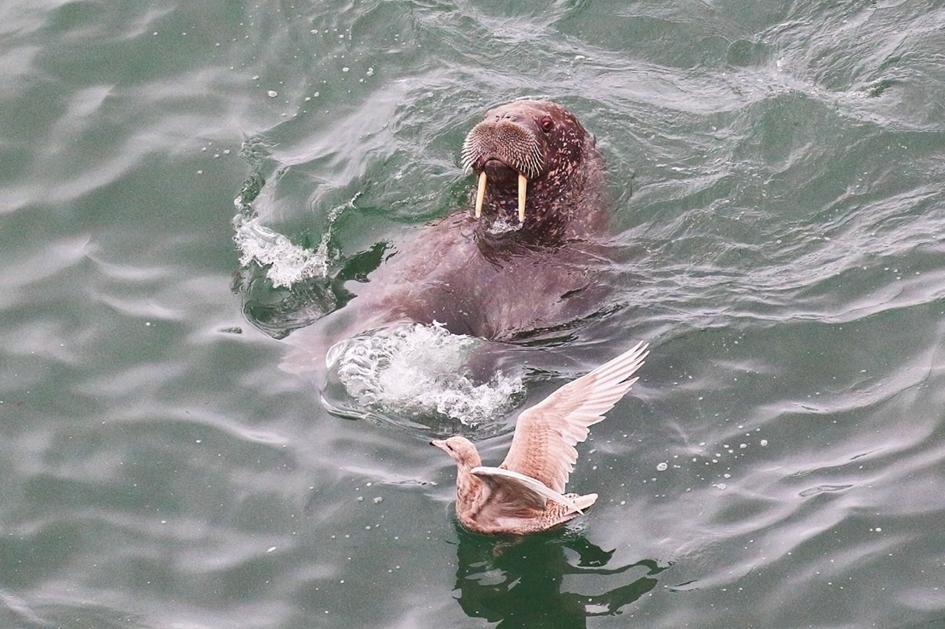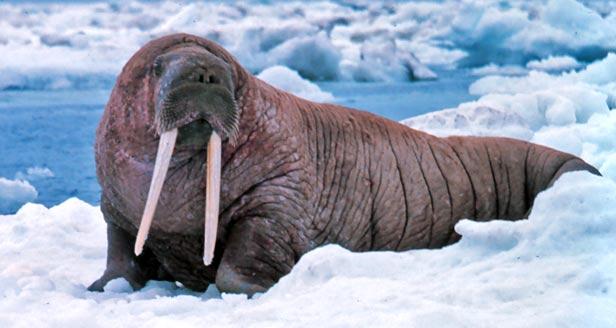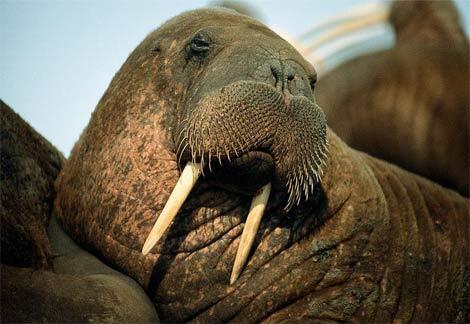That’s why Scientist Giljov and his fellow zoologist Karina Karenina spent a month in 2015 observing a huge group of walruses on Kolyuchin Island (map) in the Chukchi Sea near Russia. To avoid interfering with the animals’ behavior, the researchers perched atop an icy cliff, braving bitter winds and the risk of falling into the midst of several hundred snoring beach behemoths.
The scientists observed 74 interactions between walruses and seabirds and noted several different kinds of play—the first such observations for this species.
“The reasons why young walruses engage in such behavior are probably the same reasons why all animals begin to play,” says Giljov, whose study appeared recently in the journal acta ethologica. “Play may be important for the development of physical and social skills.”
The information that young male walruses play-fight on the beach is not new for scientists. This is thought to prepare them for competing against rivals when it comes time to breed.
But what’s new about this paper is the way walruses of both sexes appear to use birds as toys. Sometimes the walruses would sneak up on live birds floating on the water and scare them away. Other times they’d dive down below the birds and rear up out of the water at the last minute, attempting to slash the unsuspecting fowl with their tusks. Glaucous gulls, kittiwakes, tufted puffins—walruses do not seem to care about the species. So long as it was avian and floating, it seemed fair game.
Facts About Walruses
-
Walrus is a marine mammal. A male walrus is called a bull, while female walrus is called a cow. A baby Walrus is called a calf.
-
Walruses live in the Northern Hemisphere in the Arctic.
-
Walruses grow to be 7.5 pounds to 11.5ft.
-
Both male and female walruses have tusks. They use them to pull themselves out of the water.
-
They can dive down 260ft into the ocean, and they can hold thier breath under water for up to 30 minutes.
-
Walruses live between 30-40 years in the wild.













